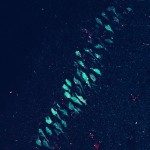Link to Pubmed [PMID] – 22378888
J. Neurosci. 2012 Feb;32(9):3154-63
A role for chemokines as molecules mediating neuron-glia cross talk has emerged in recent years, both in physiological and pathological conditions. We demonstrate here for the first time that the chemokine CXCL16 and its unique receptor CXCR6 are functionally expressed in the CNS, and induce neuroprotection against excitotoxic damage due to excessive glutamate (Glu) exposure and oxygen glucose deprivation (OGD). In mice and rats we found that, to exert neuroprotection, CXCL16 requires the presence of extracellular adenosine (ADO), and that pharmacological or genetic inactivation of the ADO A(3) receptor, A(3)R, prevents CXCL16 effect. In experiments with astrocytes cocultured with cxcr6(gfp/gfp) hippocampal cells, we demonstrate that CXCL16 acts directly on astrocytes to release soluble factors that are essential to mediate neuroprotection. In particular, we report that (1) upon stimulation with CXCL16 astrocytes release monocyte chemoattractant protein-1/CCL2 and (2) the neuroprotective effect of CXCL16 is reduced in the presence of neutralizing CCL2 antibody. In conclusion, we found that chemokine CXCL16 is able to mediate cross talk between astrocytes and neighboring neurons and, in pathological conditions such as excessive Glu or OGD exposure, is able to counteract neuronal cell death through an ADO-dependent chemokine-induced chemokine-release mechanism.
